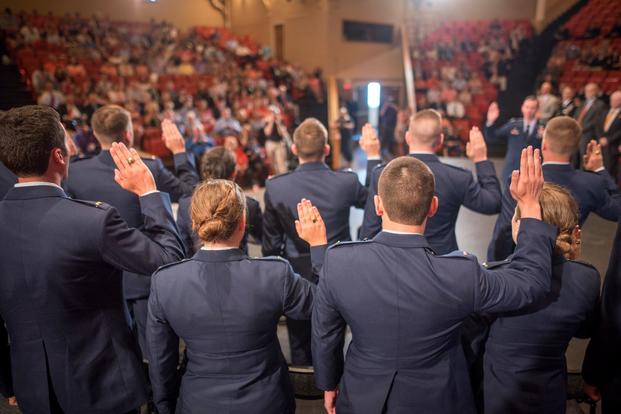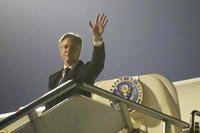The opinions expressed in this op-ed are those of the author and do not necessarily reflect the views of Military.com. If you would like to submit your own commentary, please send your article to opinions@military.com for consideration.
It's time to change how our country fills the ranks of our military.
Since 1775, our nation has used a combination of volunteers and draftees to meet our national defense personnel needs, especially in times of crisis.
Today, the military needs only about 160,000 youth from an eligible population of 30 million to meet its recruitment needs. But after two decades of war -- both of which ended unsuccessfully -- and low unemployment, many experts believe the all-volunteer force has reached a breaking point. And American confidence in its military is at a low.
The fastest and most effective way to resolve this recruiting crisis is to change how we recruit.
Instead of an "either an all-volunteer force or a fully conscripted force" model, I propose a both-and solution.
We should have our military recruiters sign up new troops for 11 months out of the year, and then have the Selective Service draft the delta between the military's needs and the total number recruited.
This model would alleviate the incredible pressure on our recruiters, lower the cost of finding new troops, and significantly reduce the much decried civilian-military gap by subjecting all of America's youth -- rich and poor -- to the possibility of military service via the draft.
This increased public interest might also have the added effect of increasing public pressure to prevent open-ended wars led by unaccountable senior leaders like we experienced in our national debacles in Iraq and Afghanistan.
While the causes of our current recruiting crisis are many, the fastest and best solution lies within our already existing Selective Service System.
This would obviously represent a seismic change, given the more recent history of military drafts.
In 1973, the draft was abolished with the establishment of the all-volunteer force, driven largely by the American public's weariness with our debacle in Vietnam; systemic inequities in the draft (e.g. wealthier Americans being able to defer service); and the fact that the size of our population had become so large in relation to the needs of the military, universal drafting became obsolete.
While the all-volunteer force had the effect of lowering discipline problems and professionalizing the force, it also created a vast gap between American citizens and those who serve -- effectively creating a military warrior caste that now appears more like a multi-generational family business than an organization that represents the true makeup of our democratic republic.
The establishment of the all-volunteer force also drove the military to expend an incredible amount of resources in terms of manpower and dollars to build a recruiting machine to attract America's youth to service. Considering it costs about $15,000 to recruit each new member, the overall cost each year exceeds $2 billion.
And recruitment has risen and fallen with the national unemployment rate.
The causes of this crisis are many, and both politicians and our national leadership are largely to blame.
For nearly a decade now, feckless politicians, using the military as a club to batter their opponents, have exacerbated increasing negative public opinion despite the fact that our military has crushed international terrorism and prevented another large-scale attack on our homeland for 22 years and running.
Despite this success, in 2023, every service except the Marine Corps is poised to miss its recruiting goals. In 2022, the Army alone fell short by 15,000 recruits.
The needs of the nation must be met, and our national leadership would be wise to reinforce the idea that military service is an important responsibility of citizenship.
While conscription has always been a controversial issue throughout our history, a hybrid model would alleviate our current military manpower crisis, increase the connectivity between the American public and its military, and more responsibly use taxpayer dollars.
Holes in our military formations are, in fact, gaps in our national security.
-- Joe Plenzler is a retired combat decorated Marine lieutenant colonel who served as the strategic advisor for communication to three successive Commandants of the Marine Corps from 2010 to 2015.












